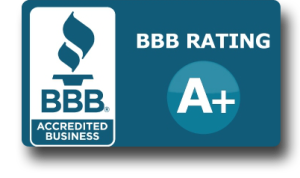HECM Line of Credit. Understanding Why And How The HECM Line Of Credit Grows by Wade Pfau the RETIREMENT RESEARCHER
A Reverse Mortgage or HECM (Home Equity Mortgage Mortgage’s effective rate is applied not just to the loan balance but also to the overall principal limit, which grows throughout the duration of the loan. How the effective rate is applied may sound technical, but it is an overwhelmingly important point to understand in order to grasp the value of opening a line of credit.
For more information, download our Reverse Mortgage 101 Cheatsheet. Read Financial News Articles on Reverse Mortgages
Typically speaking, the principal limit, loan balance, and remaining line of credit all grow at the same rate. In rare cases in the past, a reverse mortgage included a servicing set-aside that grew at a high-enough expected rate that the set-aside balance grew even as expenses were paid. A consistent growth rate is the case for all new loans today, since any new set-asides will also grow at the same effective rate.
The sum of the loan balance, line of credit, and any set-aside is the principal limit. Interest and insurance premiums are charged on the loan balance, not on set-asides or the line of credit. Set-asides are not part of the loan balance until they are actually used, but they limit access to the line of credit. Though interest and insurance premiums are not levied on set-asides or the line of credit, both components grow as if interest and premiums were charged.
When funds are borrowed, the line of credit decreases and the loan balance increases. Conversely, voluntary repayments increase the amount of the line of credit, which will then continue to grow at the effective rate, allowing for access to more credit later.
The following equation shows this relationship, which always holds for recent reverse mortgages because all variables in the equation grow at the same effective rate:
Principal Limit = loan balance + available line of credit + set-asides
Exhibit 1.1 expresses the same concept. The overall principal limit consists of the loan balance, remaining line of credit, and any set-asides. Again, all these factors grow at the same effective rate, which increases the size of the overall pie over time. If no further spending or repayment happens over time, the proportions of each of these components of the principal limit remain the same since they all grow at the same rate.
Exhibit 1.1: Components of the Principal Limit
Having unused line of credit grow is a valuable consideration for opening a reverse mortgage sooner rather than later. It is also a detail that creates a great deal of confusion for those first learning about reverse mortgages, perhaps because it seems that this feature is almost too good to be true.
I believe that the motivation for the government’s design of the HECM reverse-mortgage program is based on an underlying assumption that borrowers will spend from their line of credit sooner rather than later. Implicitly, the growth in the principal limit would then reflect growth of the loan balance more than the growth of the line of credit. In other words, designers assumed that the loan balance would be a large percentage of the principal limit.
The line of credit happens to grow at the same rate as the loan balance, and, if left unused, it can grow quite large. There was probably never an expectation that such open lines of credit would just be left alone for long periods. However, the bulk of the research on this matter since 2012 suggests that this sort of delayed gradual use of the line of credit can be extremely helpful in prolonging the longevity of an investment portfolio.
A simple example may help illuminate the concept further. Consider two individuals. Each opens a reverse mortgage with a principal limit of $100,000. For simplicity’s sake, we’ll assume that ten years later, the principal limit for both borrowers has grown to $200,000.
Person A takes out the entire $100,000 initially from the reverse mortgage (100 percent of the principal limit is the loan balance). For this person, the $200,000 principal limit after ten years reflects a $200,000 loan balance (the loan balance is still 100 percent of the principal limit), which consists of the initial $100,000 received plus another $100,000 divided between accumulated interest payments and insurance premiums.
Person B takes a different route and opens a reverse mortgage but does not use any of the credit, so the $200,000 principal limit at the end of ten years reflects the value fully of the line of credit. The principal limit was still 100 percent in the line of credit. This value was calculated with an implicit assumption that interest and insurance payments have been accruing, even though they haven’t.
Person B can then take out the full $200,000 after ten years and have the same loan balance as Person A, but Person B has received $200,000 rather than $100,000. At this point, Person B has bypassed the accumulation of interest and insurance to the detriment of the lender and the mortgage-insurance fund. Person B has really benefited from this action; it has been called the “ruthless option” by some academics who study reverse mortgages.
Wade Pfau: Professor at The American College and Principal at McLean Asset Management. His website:www.RetirementResearcher.com. The article brought to you by Reverse Mortgage Alabama as a teaching tool.










